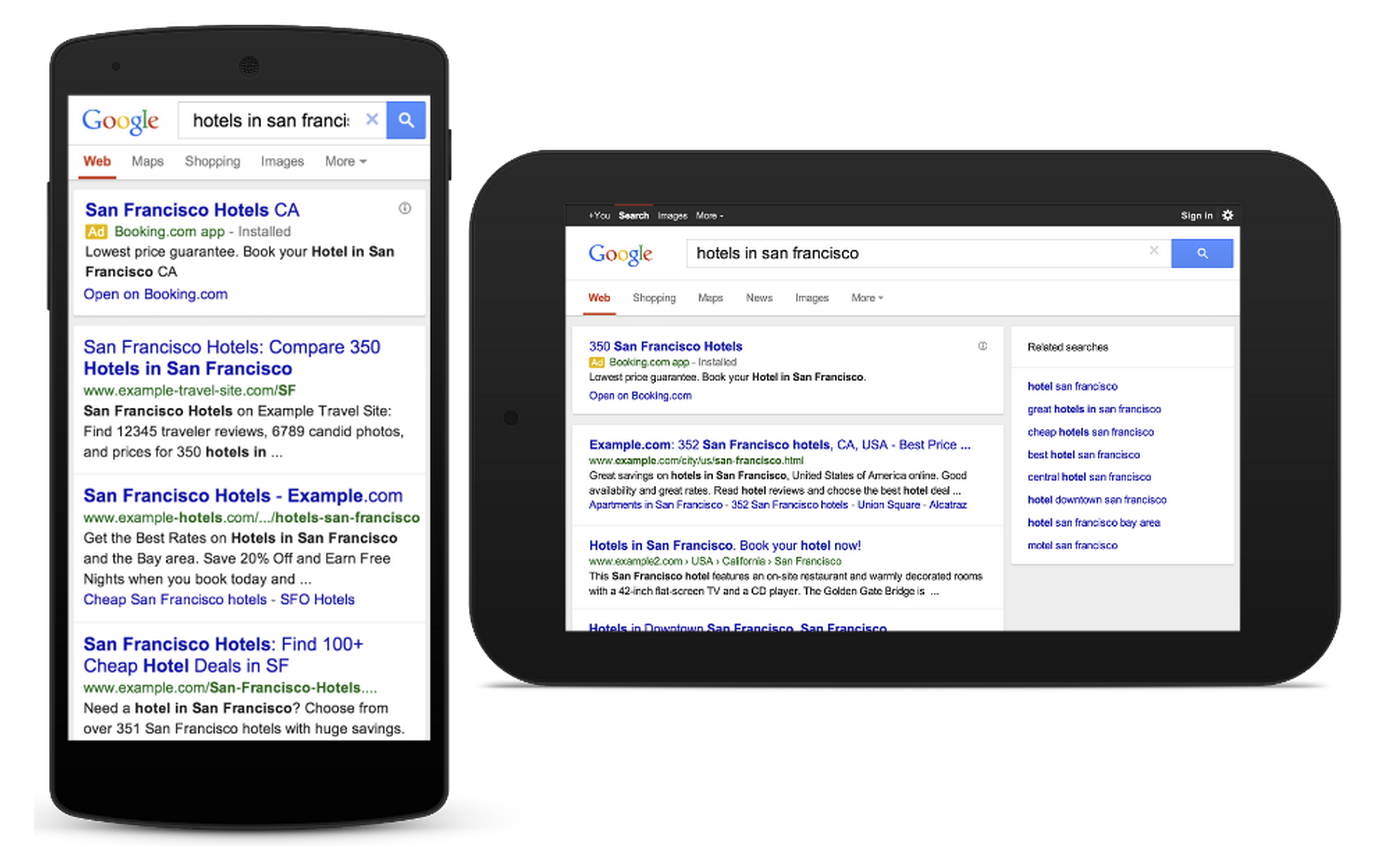Mobilegeddon has arrived. Google today updated its algorithm to rank sites it labels as “mobile-friendly” higher on mobile search results. Because the company’s search engine drives so much traffic, many are worrying, panicking, and even calling the update “Mobilegeddon” (a not-so-clever play on the terms Mobile and Armageddon).
On February 26, Google first announced plans to roll out mobile ranking changes on April 21 (an unprecedented move — the company almost never announces algorithm changes in advance). Yet this adjustment has been in the works for longer than that: The company started labeling sites as “mobile-friendly” on November 18 to denote those that are optimized for phones.
A webpage is eligible for the “mobile-friendly” label if it meets the following criteria, as detected in real time by Googlebot:
- Avoids software that is not common on mobile devices, like Flash
- Uses text that is readable without zooming
- Sizes content to the screen so users don’t have to scroll horizontally or zoom
- Places links far enough apart so that the correct one can be easily tapped
Google is now using this label as a ranking factor across all languages worldwide; the update applies to individual pages, not entire websites. As a result, searchers get “high-quality and relevant results where text is readable without tapping or zooming, tap targets are spaced appropriately, and the page avoids unplayable content or horizontal scrolling.”
Even the company has said it expects the update will “have a significant impact in our search results.” Still, the scope is only mobile searches on phones; that means desktop and tablets will not be affected.
If you run a website, whether it’s a personal one or for a business, you may see an impact on your traffic, specifically any you receive from Google’s mobile search site. In theory, it will go up if your site is optimized for mobile and down if it isn’t. Mobile search traffic could of course also remain completely unchanged — it will take a few days or even weeks for the data to start pouring in, and then we’ll know for sure which sites were affected and by how much.
Many online services have been scrambling to improve their mobile sites as a result, but of course not everyone has reacted quickly enough. Thankfully, Google provided practical pointers in February, so if you’re behind, you can catch up fairly easily:
- Check if your site is mobile-friendly by running the Mobile-Friendly Test on your webpages.
- Get a full list of mobile usability issues across your site using the Mobile Usability Report.
- Refer to the developer guide for more information and tips.
If, for whatever reason, you’re not interested in search engine optimization (SEO), these are still steps you should make an effort to go through. Even if you don’t rely on mobile search traffic from Google, improving your mobile site’s performance definitely won’t hurt.
It’s possible that Mobilegeddon is an overreaction from the SEO community — nobody outside of Google really knows just how much of an impact the ranking change will have on the company’s search engine algorithm. We do know, however, that the mobile-friendly label is just one of many signals that Google uses to rank search results. In other words, Google isn’t going to start promoting sites just because they’re mobile-friendly — they still have to be relevant and useful.





